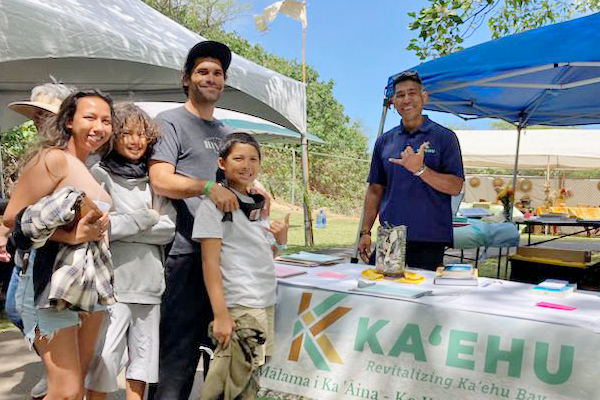Healing By Land and Sea
Ka‘ehu events help promote indigenous mental health practices.

Lohelani Furtado-Gaspar set her sights on service long before the Maui wildfires. As a middle schooler in Kalihi on O‘ahu, she was inspired by her volleyball coach, a volunteer. She asked him why he was so committed to the kids, and he replied that he was a social worker—she decided then and there that she wanted to follow a similar path.
Furtado-Gaspar has just earned her masters in social work from the University of Hawai‘i at Mānoa, and serves as both the program director and cultural practitioner at Ka‘ehu, a Maui-based nonprofit with the goal of restoring the land and perpetuating traditional Hawaiian culture using a community-based, inclusive, family-oriented approach. Since 2014, it has offered education and hands-on restoration practices along a 64-acre stretch of the Ka‘ehu Bay shoreline, located in Paukūkalo, near Wailuku, Maui.
After the Maui fires, in partnership with local organizations and with financial support from the Maui Strong Fund of the Hawaiʻi Community Foundation, Ka‘ehu launched the Mālama ‘Ohana program in November 2023. This program is a culturally grounded approach to the healing of collective trauma, and includes Hawaiian-culture-based workshops, ho‘oponopono, lomilomi, grief counseling, and other services.
The Mālama ‘Ohana program has grown into a recurring event offered multiple times per month. The program uses a Hawaiian cultural worldview to address mental health. Each event features four to six cultural activity stations offered at no charge to attendees, and, through repetitive activities such as lei making or lauhala weaving, participants can ground back into their body, explains executive director Keolamau Tengan. People can also start to open up and share their feelings, if they choose, he observes. The emphasis is on those directly affected by the wildfires, but the Maui community at large is also welcome.
Tengan stresses the importance of redefining mental health services through an indigenous lens. According to Tengan, an essential component of this redefinition is “offering aspects of mālama, or stewardship and caretaking of the land and ocean. We offer an ‘āina (land) or kai (ocean) based program to get the body moving and acting in service and connection to nature. We then combine that with different activities based on Hawaiian art and culture.”
Furtado-Gaspar offers lauhala weaving at her stations, working most often with keiki. She describes them as initially wary followed by excited as the shape takes form in their hands. “You see them using their motor skills, and their confidence builds and they start to have fun working with kids they haven’t met before.” Through lauhala weaving, she aims to help families strengthen their relationships and practice different skills and problem-solving strategies.
When reflecting on the kind of transformation she sees at the events, she is especially excited about the effects of lomilomi, a traditional form of bodywork that is as much spiritual as it is physical. Furtado-Gaspar describes people coming out of the lomi tents with tears streaming down their faces. She says they “look like a different person than when they went in.”
This summer, Tengan looks forward to expanding the number of days these programs are offered.
Read more Stories of Impact